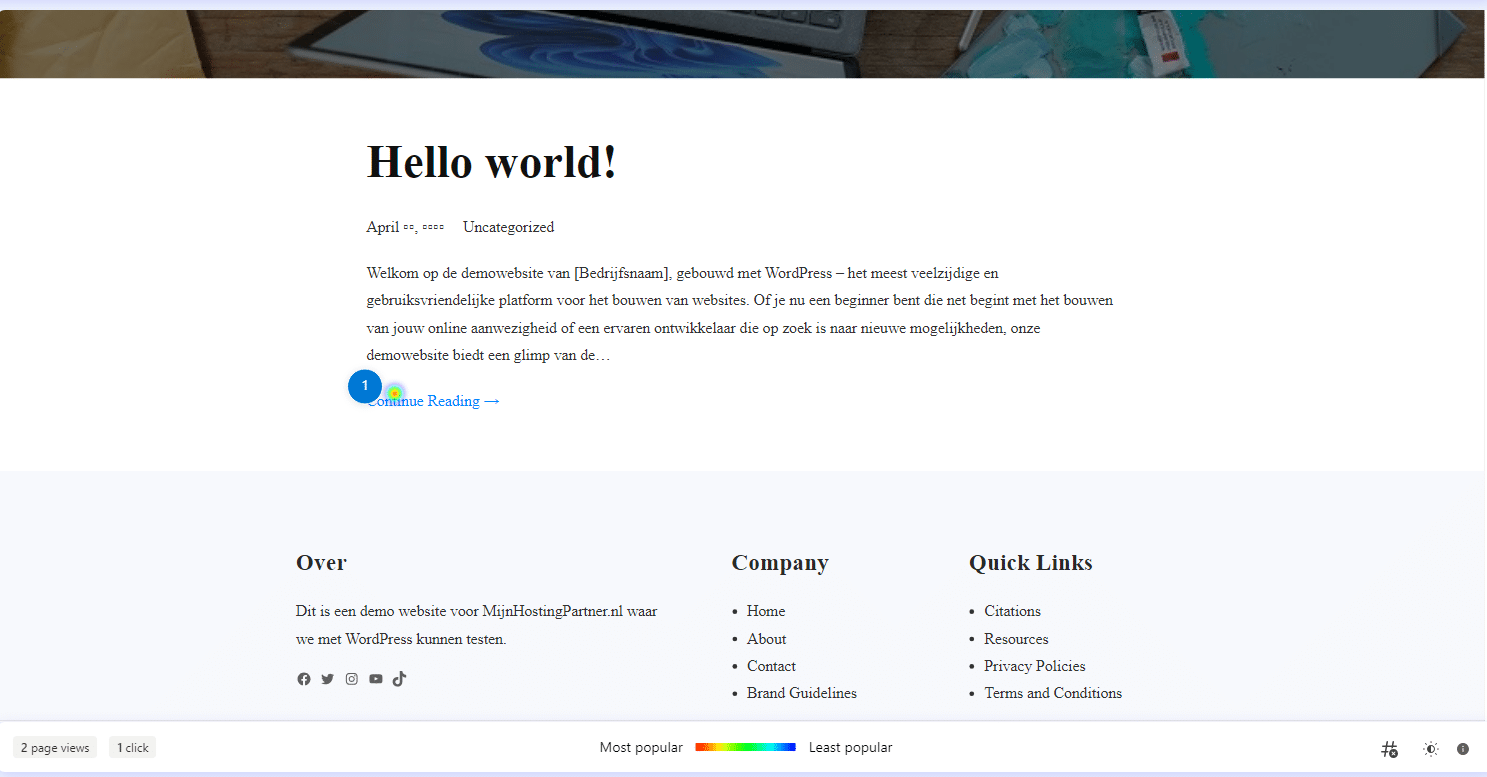Improve the user-friendliness of your website with heatmaps
In the ever-evolving digital world, the user experience (UX) of your website is crucial to the success of your online presence. One of the most effective tools for improving UX is the use of heatmaps. But what exactly are heatmaps, and how can you use them to optimize your website? In this blog post, we take a deep dive into the world of heatmaps and show you how you can use them to improve the user experience on your website.
What are heatmaps?
Heatmaps are visual representations of data that show how users interact with your website. They use color variations to highlight areas of high and low activity.
The most common types of heatmaps are Click heatmaps:
Show where users click. Mouse movement heatmaps:
Track the movement of the mouse pointer. Scroll heatmaps: Show how far down a page users scroll. Attention Heatmaps: Are based on eye movements and show what users pay most attention to.
Why use heatmaps?
Heatmaps provide valuable insights into the behavior of your website visitors.
Here are some reasons why you should use them: Understanding user behavior: by seeing where users click, move and scroll, you can better understand what they're looking for and which elements grab their attention. Identifying problem areas:
heatmaps help identify bottlenecks in navigation or layout that confuse or frustrate users. Optimizing conversions:
When you see which elements are working well and which are not, you can make adjustments that lead to higher conversion rates. Data-driven decisions: Instead of guessing, you can make decisions based on actual data about user behavior.
How to use heatmaps to improve UX?
Here are some steps to effectively use heatmaps to improve the user experience of your website: 1.
Choose the right pages to analyze Start with the most important pages of your website, such as the homepage, product pages and contact pages.
These are the pages that generate the most traffic and have a direct impact on your goals. 2.
Analyze click behavior Use click heatmaps to see where users click most often. This can help you understand which elements are attractive and which are ignored.
For example, if users frequently click on an image that is not clickable, you should make it clickable and redirect them to an appropriate page. 3.
Track mouse movements Mouse movement heatmaps can show where users are focusing their attention.
If you see users frequently moving their mouse over certain areas, make sure this information is important and relevant. 4.
Show scrolling behavior Scroll heatmaps show how far users scroll down. This allows you to determine if important information is too far down the page.
If users are not scrolling far enough to see important information, you should place it further up the page. 5.
Test and optimize Based on the insights you gain from the heatmaps, make adjustments to your website. This can be the repositioning of buttons, the revision of content layouts or the adaptation of visual elements. After making the changes, use heatmaps again to see whether the adjustments have the desired effect.
An example from practice
Let's look at an example of an e-commerce website that used heatmaps to improve its UX: Problem: An online clothing store found that its product pages were getting a lot of traffic but had low conversion rates. Analysis: By using click and scroll heatmaps, it was found that users were not often scrolling down to read the product descriptions and that the 'buy now' button was not clicked often.
Solution: The 'buy now' button was placed further up the page, next to the product images, and the product descriptions were made shorter and more concise, with a 'read more' link for those who wanted to find out more details. Result: Following these changes, there was a significant increase in conversion rates, leading to more sales and higher customer satisfaction. Heatmaps are powerful tools that help you improve the user experience of your website by providing insight into your visitors' behavior. By understanding where users click, scroll and focus their attention, you can make data-driven decisions to optimize your website. Start implementing heatmaps today and see how small changes can make big differences in the performance of your website hosting.
